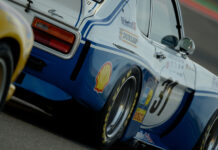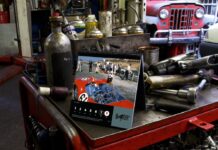As soon as Chedeen Battick settles into the driving seat, the mellow reggae sounds of Bob Marley begin to emanate from the E-Type’s audio system.

Any notion that this will be a laid back introduction to Helm’s remarkable restomod is put aside the moment we hit a straight bit of road and Battick puts his foot down. Bob’s lyrics are obliterated by the resonant boom of a 300-horsepower 3.8-liter six beneath the hood. Instead of Peter Tosh and Bunny Wailer in accompaniment we have the wail of a straight-through exhaust exiting out a pair of elongated stainless steel trumpets. The rich red and yellow foliage of the autumnal tree tunnel we are screaming through immediately turns into one orange blur.
This, clearly, is not your average E-Type. In fact, it is the realization of Battick’s dream to build his ideal iteration of the world’s most beautiful car.
Battick still remembers the very first time he saw an E-Type and the profound impact it had on him. “I was about 13 and saw one on the street in South London,” he says. “I’d always wanted to be a car designer since I was a little kid and I’d never seen anything like it.”

Born in Jamaica, he recalls being the only 6-year-old spending all his free time sketching cars, and following a move to the U.K. when he was 10, Battick would go on to study art and product design in an effort to fulfill that childhood ambition.

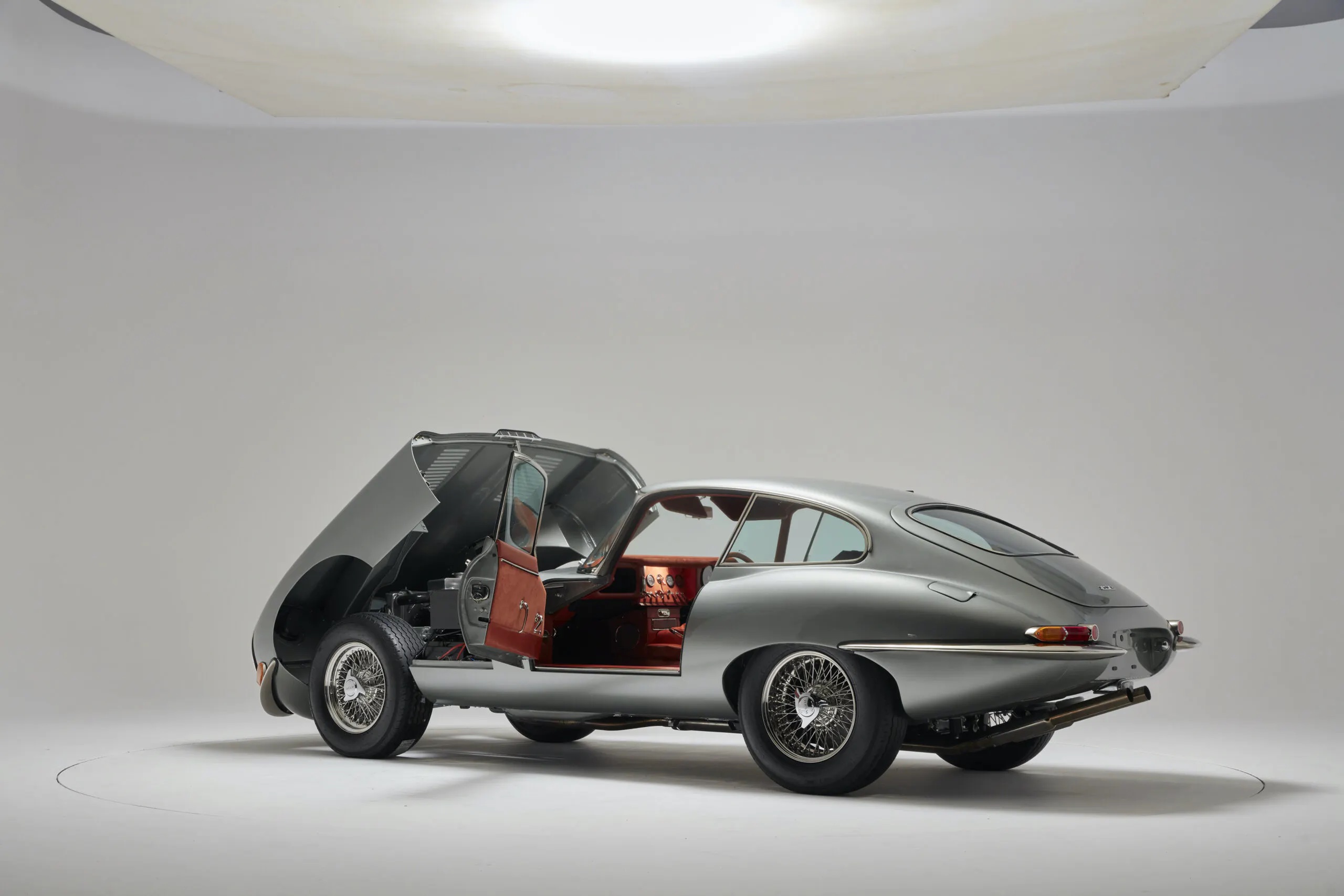
It wasn’t a straightforward route from there, however. Unable to find the job he wanted, Battick began using his art skills in the spray booth and repairing cars in his community. He bought, restored, and sold Mercedes SLs, and then one day he was offered the opportunity to buy an E-Type.
“I couldn’t afford it myself, but I found a buyer who also got me to do the restoration,” he says. That led to the founding of Automo, the Jaguar E-Type specialist shop he still runs today.
Helm Motorcars was built on more than a dozen years of experience with the E-Type, during which time Battick built up a network of specialist trimmers, engine builders, and mechanics. The idea was simple—to build Battick’s perfect E-Type: “A style icon that you’d like to be seen in in 2023, that drives like it’s 2023 as well.”

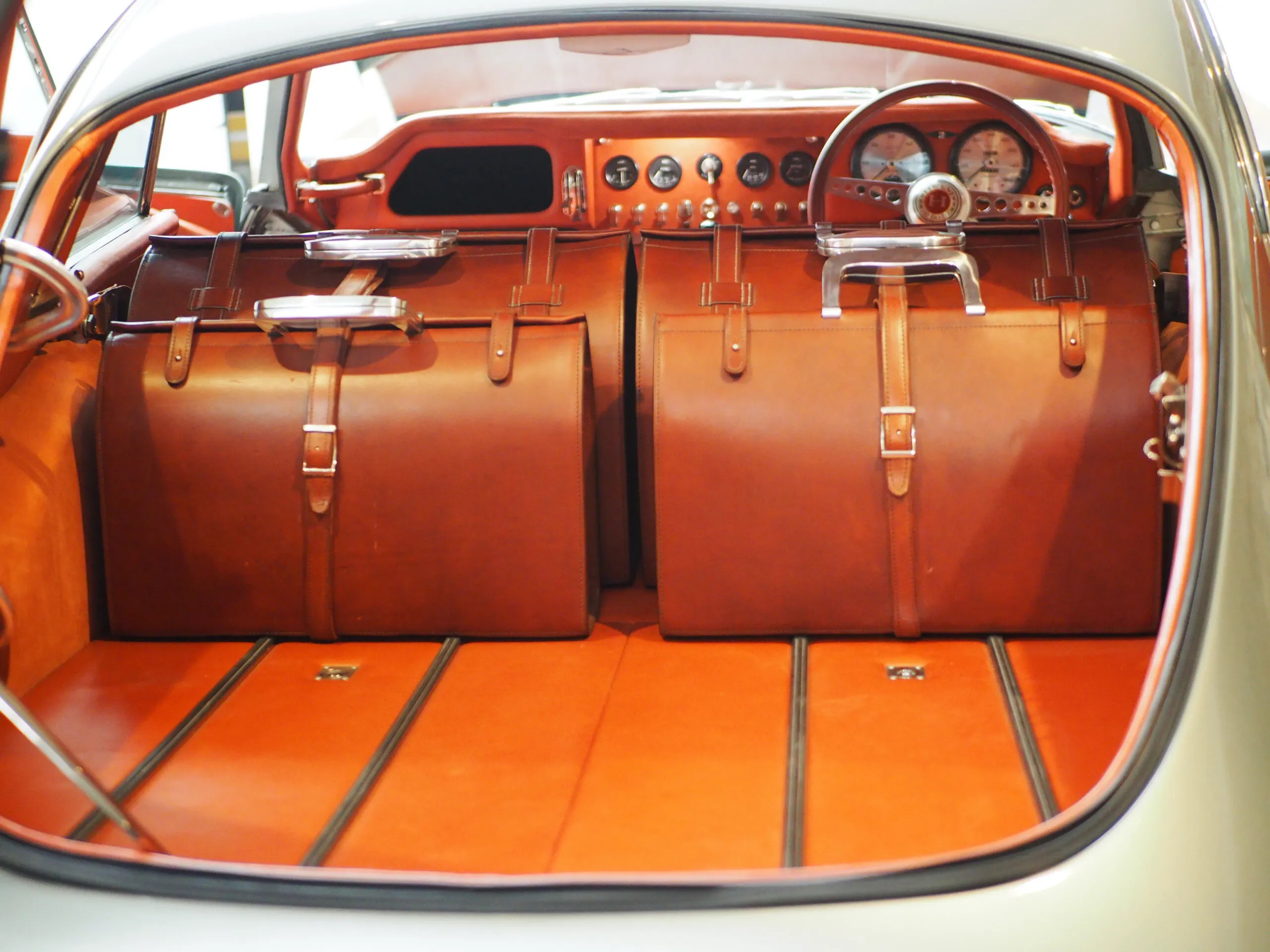
A passing glance at the exterior wouldn’t alert you to the handmade aluminum hood and doors, beneath flawless paintwork, which help reduce the weight to 2535 pounds. Pay attention and perhaps you’ll note the nickel-finish brightwork. Or you’ll catch the stainless steel wire wheels with their center-lock hubs and how they fill the wheel arches thanks to a lower stance and wider offset. Or you’ll spot the LED bulbs behind those unmistakable headlamp covers. Battick’s goal was never to distract from the original design’s perfect purity—job done.
While the Series 1 E-Type’s exterior design is timeless, Battick had a vision to create a luxurious interior that would only improve with age. Designed in partnership with leather specialist Bill Amberg, every surface is clad in wonderful semi-aniline hide of a quality and thickness that one would normally find in home furnishings. Even the toggle switches are leather-clad, their function gently embossed in the hide beneath. Each of the 20 Helm E-Types will be delivered with a set of Bill Amberg Studio luggage, tailored to match its interior.
“Our cars patinate to each individual,” Battick says.

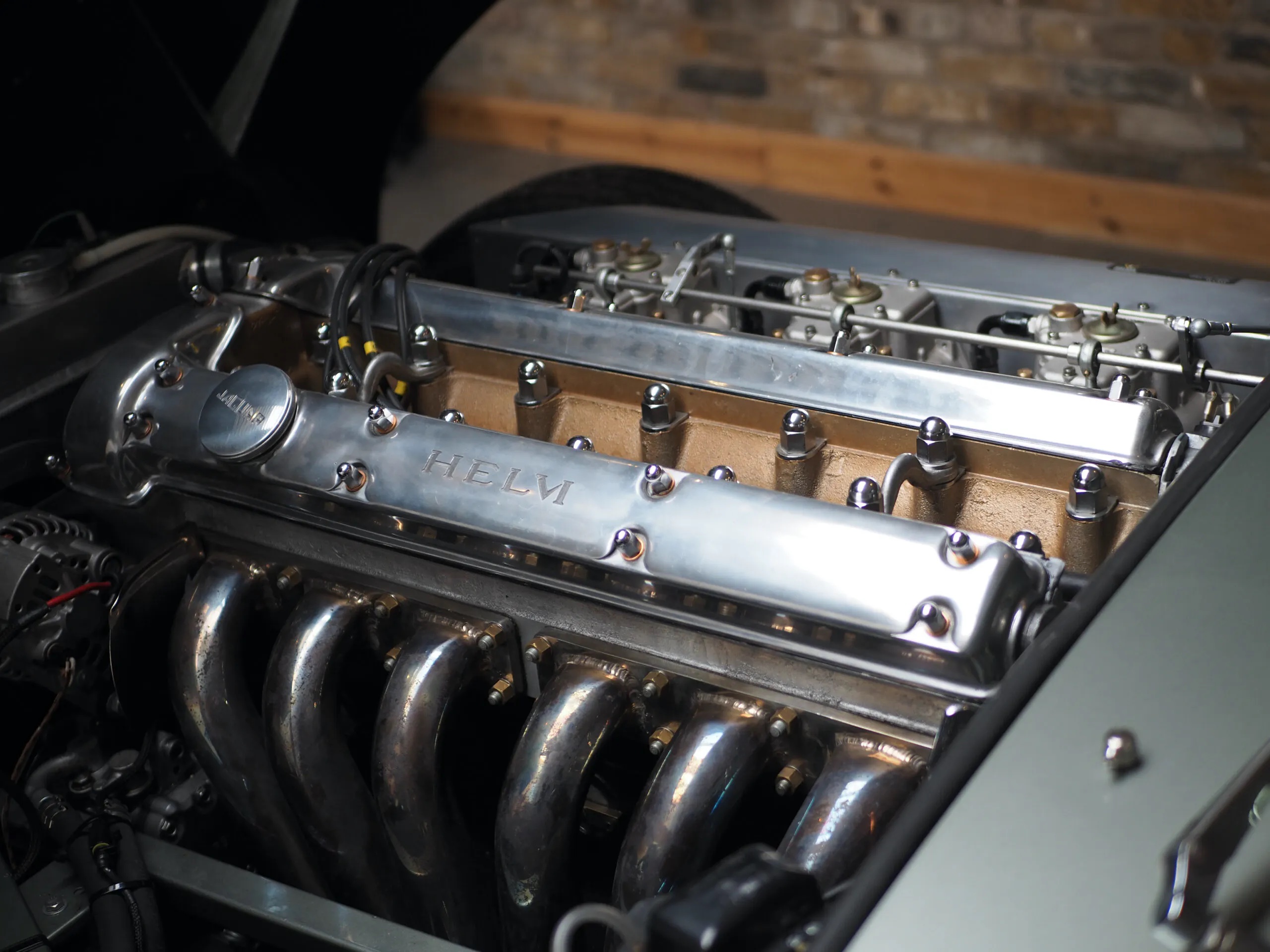
Beyond the obvious luxury, there’s technology never before seen in an E-Type, from soft-close doors and air conditioning to electric power steering and a multi-speaker stereo with Bluetooth connectivity. Customer cars have also been fitted with parking sensors, a reversing camera, and Apple CarPlay connectivity. Battick drew the line at electric windows, however, wanting to maintain that physical connection between car and driver.
And this really is an E-Type for drivers. There’s new adjustable double-wishbone suspension all around, with uprated torsion bars, plus six-piston front calipers and four-piston rears for the disc brakes, while the steering has a little extra help from a column-mounted electric assist system.
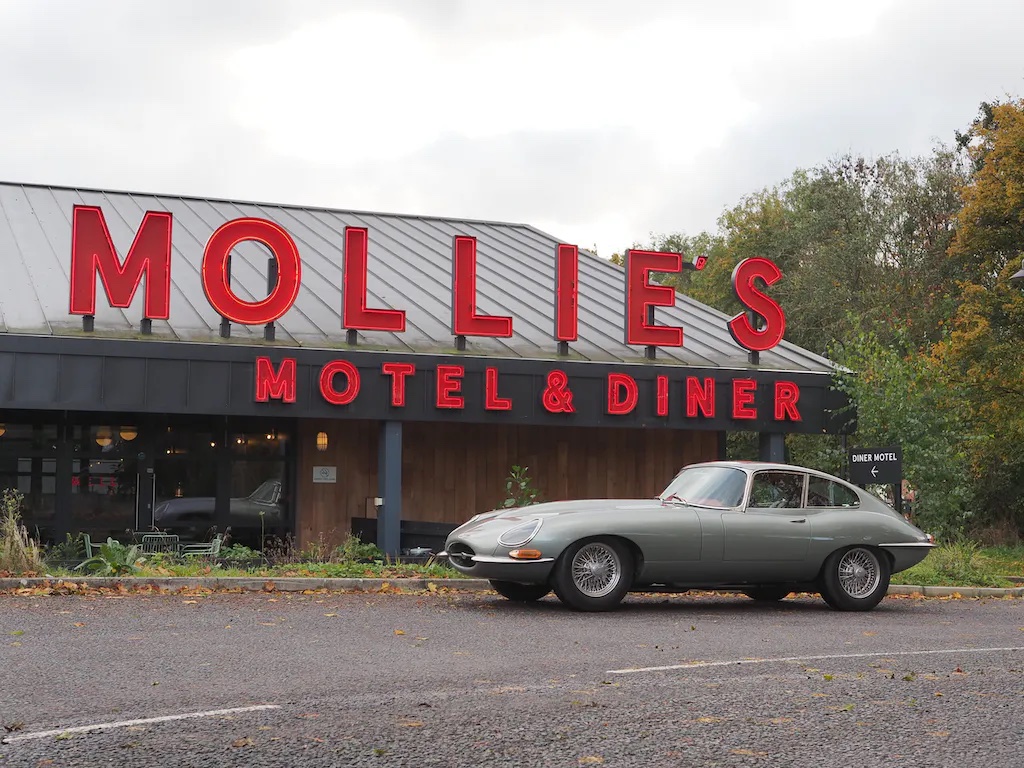
The transmission is a Tremec five-speed manual, although a ZF automatic is also available, while the blueprinted 3.8-liter motor is a work of art, thanks to all-new internals, fuel-injection with Jenvey heritage throttle bodies, Helm’s own airbox, an alloy radiator, and that big-bore exhaust. As a result, output is increased by 15 percent, to 300 hp,
From the passenger seat it certainly feels like more than that, and Battick confidently takes the Helm’s helm through a mix of narrow lanes and more open A roads as we head for a bite at the American-style Mollie’s Motel and Diner near Oxford.
With the Jag brimmed with British Petroleum’s finest and our bellies full of cheeseburger, ribs, and shakes, it’s my turn to take the wheel.
There can be few more evocative views than looking across the sculpted hood of an E-Type. Battick has slightly lowered the seat to make it easier for taller drivers to take in that view unobstructed by the low roof height. I think I’d like it a little lower still, and while I’m at it, I’ll take adjustable pedals so I could heel-and-toe without catching my foot on the inner wheel arch.
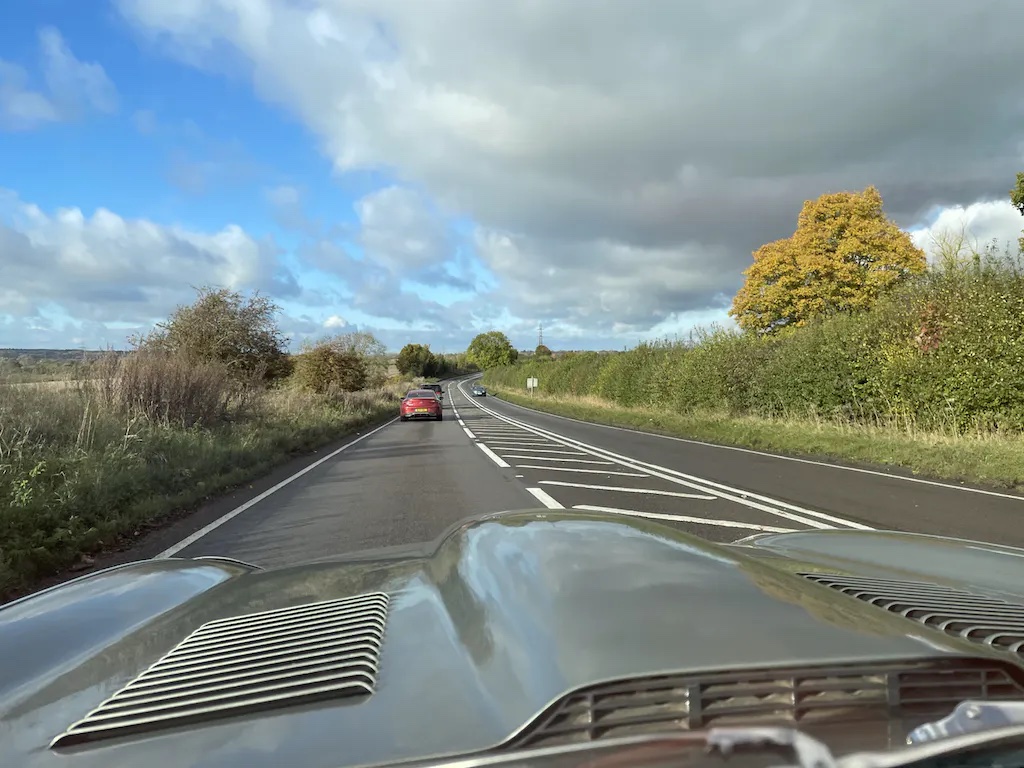
The clutch is a little heavy, but the steering is super light as I pull away for the first time. That Tremec gearbox is just a joy to work, with a short and wonderfully mechanical action.
Within a few shifts I’m immediately aware of just how little the Helm squats under acceleration, while hitting the anchors is dive-free, too. The last E-Type I drove had seen its powertrain electrified but the rest of its running gear left standard. It pitched and rolled like an ocean liner in comparison. In fairness, that car was scheduled to live a low-speed life on an exotic island, but the contrast is remarkable. The Helm’s brake pedal is almost race-car firm and the stopping power is prodigious.

The Helm’s lateral body control is just as good as its fore-and-aft management, yet the ride doesn’t suffer untowardly. It’s no magic carpet, but the trade off for the confidence it gives you to exercise the engine to its full potential is worth it.
A lightened flywheel means the motor revs up rapidly, but there’s enough torque to mean you don’t need to redline it to find yourself travelling rather swiftly.
The minor criticisms that I could level have already been addressed for production cars, with this, car zero, having a slightly unnerving, over-sensitive quality to the steering at higher speeds and an exhaust that’s just a little too loud for comfortable cruising. On the topic of noise, the door seals could better subdue the rush of the wind.
Like I said, none of these should trouble any of the 20 lucky individuals who order a Helm, but they’re more noticeable because of the otherwise exceptional build quality. Despite this being a much-abused prototype, which has seen action at Silverstone and other circuits as well as thousands of miles on the road, there are no untoward noises or vibrations of any kind.
Every customer car will go through a near-thousand-mile testing program with Battick to ensure it meets his meticulous standards, while the company is partnering with specialists worldwide to provide aftercare.
Three of the five cars ordered so far are for U.S. customers, and the company’s first roadster is almost ready to ship to Australia. As each car is different there’s no fixed price, but around half a million pounds ($620,000) should cover it.
Now, that’s a lot of money, but there will only ever be 20 Helm E-Types, and they might just be the best the world has ever seen.
Report by Nik Berg for hagerty.com



